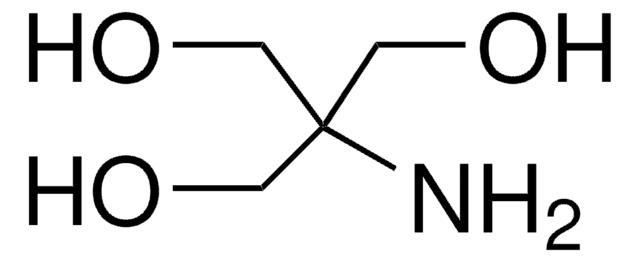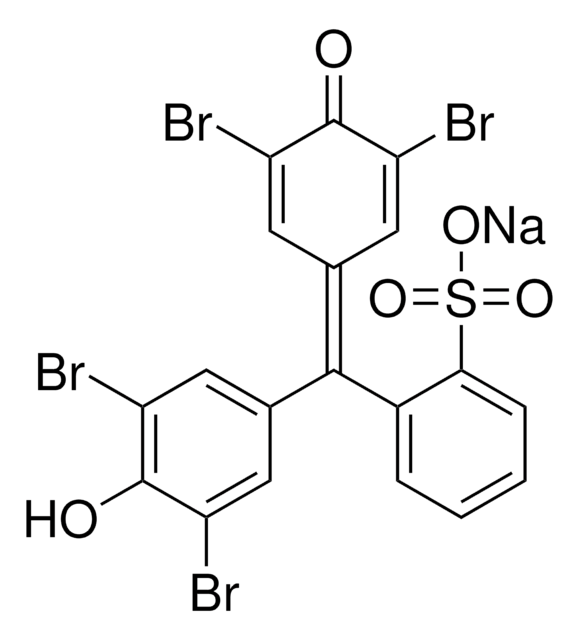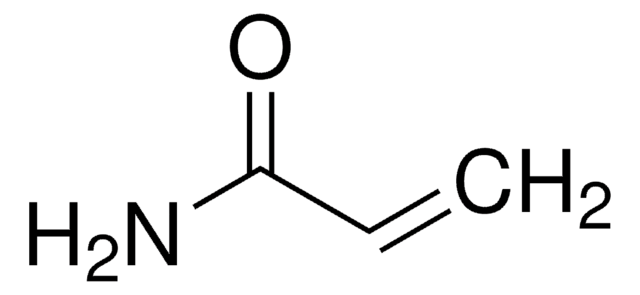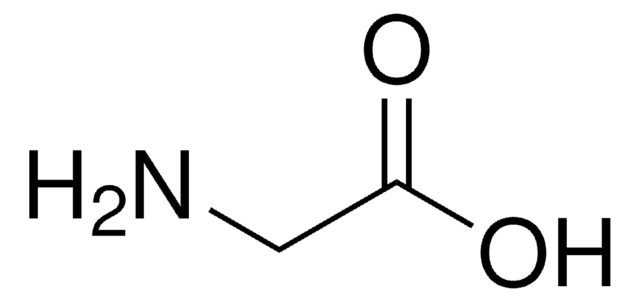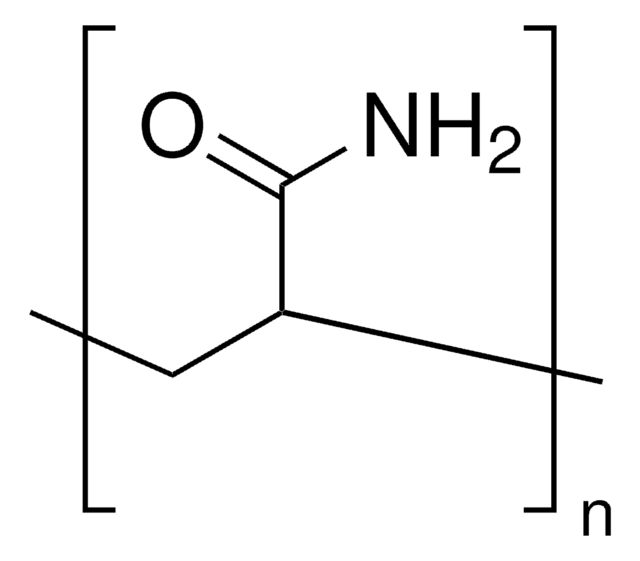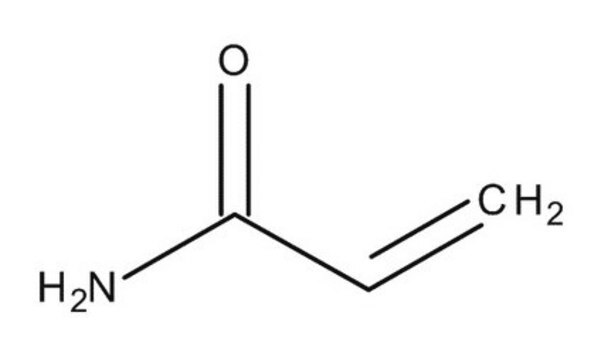01696
Acrylamid
for Northern and Southern blotting, powder blend
Synonym(e):
2-Propenamid, Acrylsäureamid
About This Item
Empfohlene Produkte
Qualität
for molecular biology
Qualitätsniveau
Dampfdichte
2.45 (vs air)
Dampfdruck
0.03 mmHg ( 40 °C)
Produktlinie
BioReagent
Assay
≥99.5% (GC)
Form
powder blend
Methode(n)
electrophoresis: suitable
Verunreinigungen
DNases, none detected
RNases, none detected
phosphatases, none detected
proteases, none detected
bp
125 °C/25 mmHg (lit.)
mp (Schmelzpunkt)
82-86 °C (lit.)
Löslichkeit
H2O: 0.25 g/mL at 20 °C, clear, colorless
Lagertemp.
2-8°C
SMILES String
NC(=O)C=C
InChI
1S/C3H5NO/c1-2-3(4)5/h2H,1H2,(H2,4,5)
InChIKey
HRPVXLWXLXDGHG-UHFFFAOYSA-N
Suchen Sie nach ähnlichen Produkten? Aufrufen Leitfaden zum Produktvergleich
Verwandte Kategorien
Allgemeine Beschreibung
Anwendung
Vorsicht
Ähnliches Produkt
Signalwort
Danger
Gefahreneinstufungen
Acute Tox. 3 Oral - Acute Tox. 4 Dermal - Acute Tox. 4 Inhalation - Carc. 1B - Eye Irrit. 2 - Muta. 1B - Repr. 2 - Skin Irrit. 2 - Skin Sens. 1 - STOT RE 1 Oral
Zielorgane
Peripheral nervous system
Lagerklassenschlüssel
6.1C - Combustible, acute toxic Cat.3 / toxic compounds or compounds which causing chronic effects
WGK
WGK 3
Flammpunkt (°F)
280.4 °F - closed cup
Flammpunkt (°C)
138 °C - closed cup
Persönliche Schutzausrüstung
Eyeshields, Faceshields, Gloves, type P3 (EN 143) respirator cartridges
Zulassungslistungen
Zulassungslistungen werden hauptsächlich für chemische Produkte erstellt. Für nicht-chemische Produkte können hier nur begrenzte Angaben gemacht werden. Kein Eintrag bedeutet, dass keine der Komponenten gelistet ist. Es liegt in der Verantwortung des Benutzers, die sichere und legale Verwendung des Produkts zu gewährleisten.
EU REACH SVHC Candidate List
EU REACH Annex XVII (Restriction List)
Choose from one of the most recent versions:
Analysenzertifikate (COA)
Sorry, we don't have COAs for this product available online at this time.
If you need assistance, please contact Kundensupport
Besitzen Sie dieses Produkt bereits?
In der Dokumentenbibliothek finden Sie die Dokumentation zu den Produkten, die Sie kürzlich erworben haben.
Kunden haben sich ebenfalls angesehen
Protokolle
An introduction to both Northern and Southern blotting, popular methods for the transfer of macromolecules to membranous support. This article also offers a Southern blot protocol and a northern blot protocol.
Einführung in Northern Blotting und Southern Blotting, bei denen es sich um beliebte Methoden zur Übertragung von Makromolekülen auf Membranen handelt. Dieser Artikel enthält außerdem ein Protokoll für Northern Blotting und ein Protokoll für Southern Blotting.
Unser Team von Wissenschaftlern verfügt über Erfahrung in allen Forschungsbereichen einschließlich Life Science, Materialwissenschaften, chemischer Synthese, Chromatographie, Analytik und vielen mehr..
Setzen Sie sich mit dem technischen Dienst in Verbindung.
